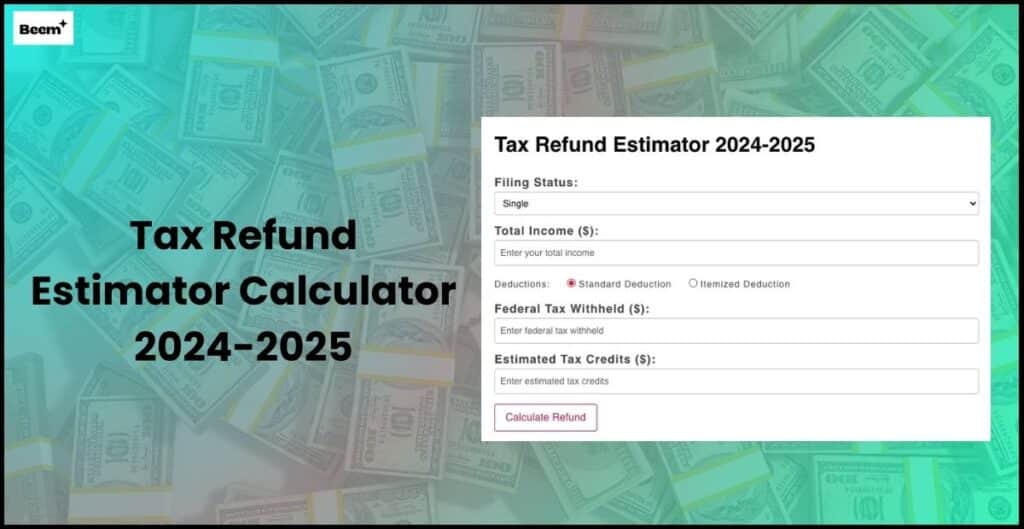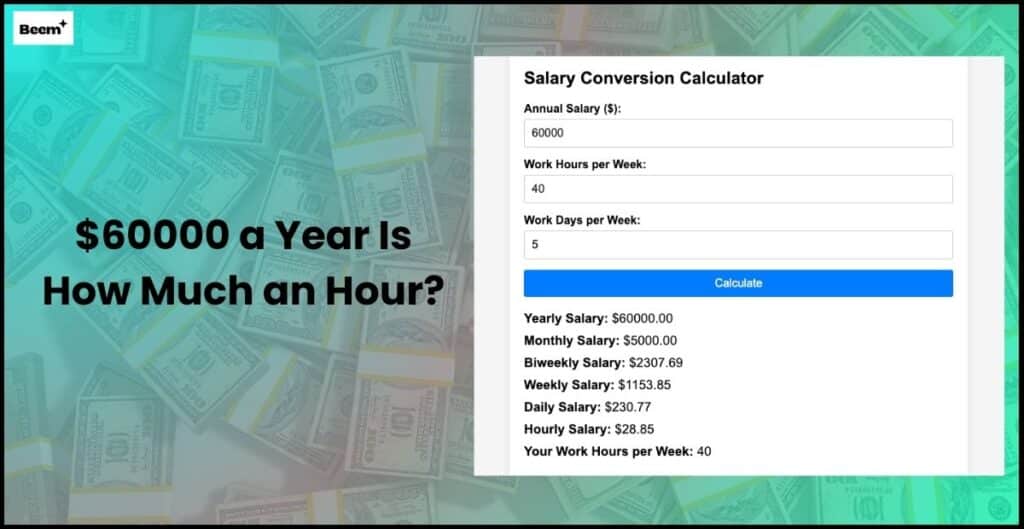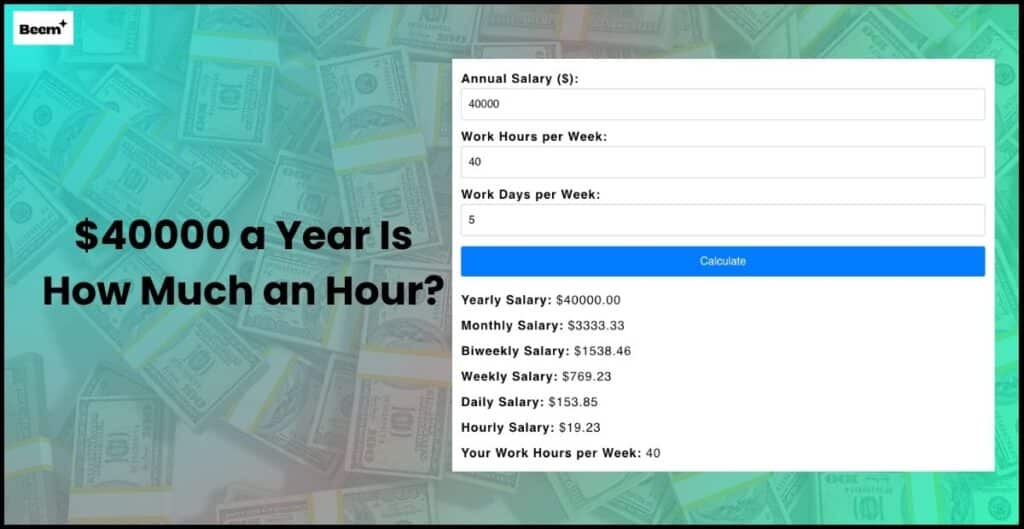Retirement Calculator
Result:
Retirement planning is one of the most critical aspects of personal finance, yet many people feel overwhelmed by the sheer number of factors that come into play when planning for a secure financial future.
With varying retirement ages, unpredictable investment returns, and changing personal circumstances, it’s easy to get lost in the numbers.
This is where a retirement calculator becomes an invaluable tool. Whether you’re just starting your career or already approaching retirement, a retirement calculator helps you assess your current financial situation, project your savings, and plan for the retirement lifestyle you desire.
In this comprehensive guide, we’ll explore what retirement calculators are, how they work, the benefits they offer, and even a step-by-step walkthrough on how to build one.
By the end of this article, you’ll have a deep understanding of retirement calculators and be better prepared to make informed financial decisions for your future.
What Is a Retirement Calculator?

At its core, a retirement calculator is a financial tool designed to help you estimate how much money you will have by the time you retire. It takes into account several variables including:
- Current Age: Your age today.
- Retirement Age: The age at which you plan to retire.
- Current Savings: The amount of money you have saved up so far.
- Annual Contributions: The amount you plan to save or invest on an annual basis.
- Expected Annual Return: The rate of return you anticipate on your investments.
By plugging these figures into a retirement calculator, you can estimate your total savings at retirement. Many calculators also allow you to factor in additional elements such as inflation, tax implications, and varying rates of return over time.
Retirement Calculator Formula and Examples
Basic Retirement Calculator Formula
The standard formula to estimate your retirement savings when you have an initial lump sum (current savings) and make regular annual contributions is:
Future Value (FV) = Current Savings × (1 + r)ⁿ + Annual Contribution × [((1 + r)ⁿ – 1) / r]
Where:
• r = Annual rate of return (in decimal form, so 6% becomes 0.06)
• n = Number of years until retirement
Example 1: Basic Calculation
Suppose you have:
• Current Savings = $50,000
• Annual Contribution = $5,000
• Expected Annual Return = 6% (r = 0.06)
• Years until Retirement = 30 (n = 30)
Step-by-step calculation:
Calculate the growth of current savings:
= $50,000 × (1 + 0.06)³⁰
(1.06)³⁰ is approximately 5.74
So, $50,000 × 5.74 ≈ $287,000
Calculate the future value of the annual contributions:
= $5,000 × [((1.06)³⁰ – 1) / 0.06]
((1.06)³⁰ – 1) ≈ 5.74 – 1 = 4.74
Divide by 0.06: 4.74 / 0.06 ≈ 79.0
Multiply by the annual contribution: $5,000 × 79.0 ≈ $395,000
Sum the two parts to get the total estimated savings:
Total FV ≈ $287,000 + $395,000 = $682,000
Using The Future Value Of Annuity Formula
If you want to calculate just the contributions’ impact (ignoring an initial lump sum), the future value of an annuity formula is used:
FVₐ = Annual Contribution × [((1 + r)ⁿ – 1) / r]
Example 2: Only Annual Contributions
Assume you contribute $7,000 annually, expect an annual return of 5% (r = 0.05), and plan to contribute for 25 years (n = 25).
Calculation:
- Compute (1 + 0.05)²⁵
(1.05)²⁵ ≈ 3.386 - Subtract 1:
3.386 – 1 = 2.386 - Divide by r:
2.386 / 0.05 ≈ 47.72 - Multiply by the annual contribution:
FVₐ ≈ $7,000 × 47.72 ≈ $334,040
This formula shows that, over 25 years, your annual contributions alone could grow to about $334,040 at a 5% annual return.
Savings With Annual Contributions
For a comprehensive retirement estimate, you typically combine both parts—the initial lump sum and the series of contributions. The overall formula remains:
Total Future Value = (Initial Savings × (1 + r)ⁿ) + [Annual Contribution × ((1 + r)ⁿ – 1) / r]
Example 3: Combined Approach
Let’s say you start with $20,000 in savings, contribute $4,000 each year, expect a 7% return (r = 0.07), and have 20 years until retirement (n = 20).
Calculation:
Future Value of initial savings:
= $20,000 × (1.07)²⁰
(1.07)²⁰ ≈ 3.87
Thus, $20,000 × 3.87 ≈ $77,400
Future Value of contributions:
= $4,000 × [((1.07)²⁰ – 1) / 0.07]
= $4,000 × [(3.87 – 1) / 0.07]
= $4,000 × (2.87 / 0.07)
= $4,000 × 41 ≈ $164,000
Total Future Value:
≈ $77,400 + $164,000 = $241,400
The Importance of Retirement Planning
Planning for retirement is not just about accumulating a nest egg—it’s about ensuring that you can maintain your lifestyle, meet unexpected expenses, and enjoy your later years without financial stress. Here are some key reasons why retirement planning is essential:
- Financial Independence: Effective planning helps you avoid becoming dependent on others for financial support during your retirement years.
- Inflation Protection: With the rising cost of living, it’s crucial to ensure your savings grow enough to keep pace with inflation.
- Unexpected Expenses: Life is unpredictable. Having a robust retirement plan means you’re better prepared to handle medical emergencies, home repairs, or other unforeseen costs.
- Quality of Life: Adequate retirement savings enable you to enjoy your hobbies, travel, and live comfortably without constant financial worry.
Without a clear plan, you might underestimate the amount of money you’ll need, leading to financial strain later in life. A retirement calculator provides a realistic projection based on your inputs and can serve as a wake‑up call if adjustments are necessary.
How Do Retirement Calculators Work?
Retirement calculators work by using the principles of compound interest. Essentially, they simulate how your current savings grow over time when subjected to an annual rate of return—while also factoring in additional yearly contributions.
The basic mathematical formula used is:
Future Value = Current Savings × (1 + Annual Return)^(Years) + Annual Contribution × [((1 + Annual Return)^(Years) - 1) / Annual Return]
Here’s a breakdown of the components:
- Current Savings × (1 + Annual Return)^(Years): This calculates the growth of your existing savings over the number of years until retirement.
- Annual Contribution × [((1 + Annual Return)^(Years) - 1) / Annual Return]: This formula computes the future value of your series of contributions, assuming they’re made at the end of each period.
While this is a simplified explanation, many advanced calculators also account for factors such as inflation, tax rates, and even variable contributions over time.
Want to start planning your retirement? Use this calculator to chalk out your plan
The ultimate goal of every individual is to earn enough money during their career and save up enough to lead a comfortable retired life. If you’re looking at a luxurious retirement, you will have to save up quite a bit. So how do you do it? How do you know how much you need to save up, how much you have to start saving, and from when?
As the old saying goes, there is no time like the present. Start saving towards your retirement right away if you haven’t already. In fact, we’ve got a retirement calculator to help understand what your retirement savings score will be. Once you calculate this score, you can then take the necessary steps to work towards improving it if needed.
How does a retirement calculator work?
This retirement calculator works on the basis of the following factors:
- Your age.
- Your annual income before taxes.
- Your current savings level.
- How much of your income you are willing to set aside every month.
Each of these factors is adjustable on the calculator. Simply input the figures that relate to you and you will be able to see your retirement score. The score tells you whether you are way off your goal, on your way to getting there, getting close, or right on track.
Let’s look at this with an example with the following parameters:
- Current age: 30 years
- Current pre-tax income: $70,000
- Current savings: $25,000
- Monthly savings towards retirement: $700
There are other secondary factors as well, including your monthly spending during retirement, any extra income during retirement, at what age you want to retire, etc. These will also influence your score.
According to the calculator, if you intend on retiring at the age of 67 years and want to spend $3,000 per month during your retired life, you will need to have at least $2.39 million in the bank. The calculator worked out this figure by considering that your salary will increase at a standard rate of 2% per year, an inflation rate of 3% every year, and that your savings would be invested in a low-risk investment policy giving you a return of around 5% per year.
Given the current parameters, you will achieve only 67% of this goal, that is, $1.59 million. That will not be enough for you to lead a comfortable retired life.
So, what do you do to make this score better? Read on to find out.
How can I improve my retirement benefits?
Here are a few ways that can help you improve your score and get to your target retirement nest egg:
- Put your savings into an individual retirement account. It is one of the best ways to save up for your retired life. It has immense tax benefits as well. You can invest up to $6,000 every year into this account. Plus, if you are above 50 years of age, you can put in another $1,000 as well.
- You can contribute up to $19,500 per year (26,000 for those above 50 years) toward your 401(k). At least make sure that you are matching your employer for every dollar they put into your account.
- Try and save up a little more each year. Cut down on unnecessary expenses.
- When you get a pay hike, increase the amount you save every month. Savings up towards this fund should be your primary goal before considering any other extra expense.
How much money will I need for my retired life?
As a general thumb rule, you need to have at least 80% of the income you will earn from now till you retire. Of course, you can choose to have more. The more money you have when you retire, the better your post-retirement life is bound to be.
Also, you need to factor in how your daily and monthly expenses will change once you retire. Some of your current expenses may not continue while other new ones may come up. You may travel more often. Your medical expenses are bound to increase. So you might want to save up a little more for that as well. Your tax payments will no longer be a burden.
On the other hand, you may get some new forms of income as well. If you have made multiple smart investments by the time you retire, all of them could fetch you quite a tidy sum when they mature. You can also look for part-time work to supplement your nest egg if needed. Besides, it will keep you busy.
Start planning for your retirement from today. It’s never too early to start setting up a monetary cushion for your latter years.
Key Variables and Their Impact on Your Retirement Savings
Understanding the key variables that feed into a retirement calculator is essential for both using these tools effectively and for building one yourself. Let’s delve deeper into each:
Current Age and Retirement Age
The difference between your current age and your intended retirement age determines the number of years your money has to grow. A longer period generally means more time for compound interest to work in your favor.
Current Savings
This is your starting point. The more you’ve saved so far, the less you may need to contribute in the future. However, even modest savings can grow significantly over time with a good rate of return.
Annual Contributions
Regular contributions, whether from savings, employer-sponsored plans, or other sources, are crucial. Even small, consistent deposits can add up, especially when combined with compound interest.
Expected Annual Return
This variable is an estimate of how your investments will perform each year. While market returns can be unpredictable, using a historical average (such as 5–7% for diversified portfolios) can provide a realistic benchmark.
Each of these variables plays a pivotal role in determining your final retirement savings. Adjusting one even slightly can have a significant impact over several decades.
Benefits of Using a Retirement Calculator
Here are some of the key benefits of using a retirement calculator:
- Goal Setting: It allows you to set realistic retirement savings goals and track your progress over time.
- Visualizing the Future: Seeing a projection of your retirement funds can motivate you to save more or adjust your investment strategy.
- Decision-Making: With a clear picture of your financial future, you can make informed decisions about spending, saving, and investing.
- Risk Management: It helps identify potential shortfalls early, allowing you to adjust contributions or reallocate assets.
Ultimately, these tools empower you to take control of your financial future rather than leaving your retirement outcomes to chance.
Step-by-Step Guide to Using a Retirement Calculator
If you’re new to retirement calculators, here’s a simple guide to get you started:
- Gather Your Data: Collect information such as your current age, planned retirement age, current savings, annual contributions, and an estimate of your annual return.
- Enter the Information: Input your data into the calculator. Many online tools have user‑friendly forms that guide you through each field.
- Analyze the Results: Review the projection provided by the calculator. Note the estimated total savings and consider whether it aligns with your retirement goals.
- Make Adjustments: Experiment with different scenarios—such as increasing your contributions or delaying retirement—to see how these changes affect your outcome.
- Plan Accordingly: Use the insights gained to adjust your savings strategy or consult with a financial advisor for more personalized advice.
By following these steps, you can get a clearer picture of where you stand and what you need to do to meet your retirement goals.
Additional Tools for Retirement Planning
Beyond retirement calculators, there are numerous resources available to help you plan your future:
- Budgeting Apps: Track your spending and savings to identify areas where you can improve your financial habits.
- Investment Platforms: Many platforms offer tools and calculators to project investment growth.
- Financial Advisors: A certified advisor can provide personalized advice based on your unique financial situation.
- Retirement Planning Workshops: Attend seminars or webinars to stay informed about the latest trends in retirement planning.
Integrating these tools with a retirement calculator can provide a more holistic view of your financial future.
Conclusion
A well‑crafted retirement calculator is more than just a number‑crunching tool—it’s a roadmap for your future financial security. By understanding the variables at play and using the insights provided by a calculator, you can set realistic goals, make informed decisions, and adjust your strategies as life unfolds.
Whether you choose to use a pre‑built online tool or build your own custom calculator, the key is to remain proactive in your retirement planning. Remember that the earlier you start, the more time you have to benefit from compound interest and financial discipline.
We hope this ultimate guide has provided you with a thorough understanding of retirement calculators and their pivotal role in financial planning. As you move forward, keep in mind that these tools are designed to assist you—not replace professional financial advice. Stay informed, stay flexible, and most importantly, start planning today for the retirement you deserve.
Your financial future is in your hands. Use every tool available to build a secure and comfortable retirement.
Ready to Plan Your Retirement?
If you haven’t already, try using our interactive retirement calculator above or explore other reputable online tools. Empower yourself with the knowledge and confidence to make the best decisions for your future.
And if you’re interested in diving deeper, consider building your own calculator or consulting with a financial advisor to tailor a plan that fits your unique needs.
Your retirement journey begins with a single step—plan wisely and secure the future you deserve!
Frequently Asked Questions (FAQs) On Retirement Calculator
How much should I ideally save up for my retirement?
This depends on the inflation rate and how much you intend on spending during your retirement. While there is no specific amount, you should ideally save about 80% of your pre-retirement income to have a comfortable retired life.
How can I determine my retirement goals?
Your retirement goals depend on the kind of life you intend on living and where you plan to retire. Make sure you include a bit of travel, investments, vehicle upgrade, etc. when you set your retirement goals.
When should I set up my retirement plan?
It’s never too early or too late to start planning your retirement. But, we’d advise you not to wait too long. The earlier you start, the better. When you’re younger, you’ll have the freedom to invest in risky but high-yield investments which can help you grow your fund exponentially. As you grow older, you can cut down the risks and invest in bonds which will grow at a slow pace.
How much of my income should I save every month for my retirement?
A good practice would be to start saving at least 10% of your after-tax income for your retirement. As you grow older, you can increase this contribution.
Convert more salaries:
$42000 a Year Is How Much an Hour? | $95,000 a Year is How Much an Hour? | $40000 a Year Is How Much an Hour? | $60000 A Year Is How Much An Hour?
Explore More Calculators:
Auto Loan Calculator | Roth IRA Calculator | Retirement Calculator | 401(k) Calculator | Compound Interest Calculator
















































